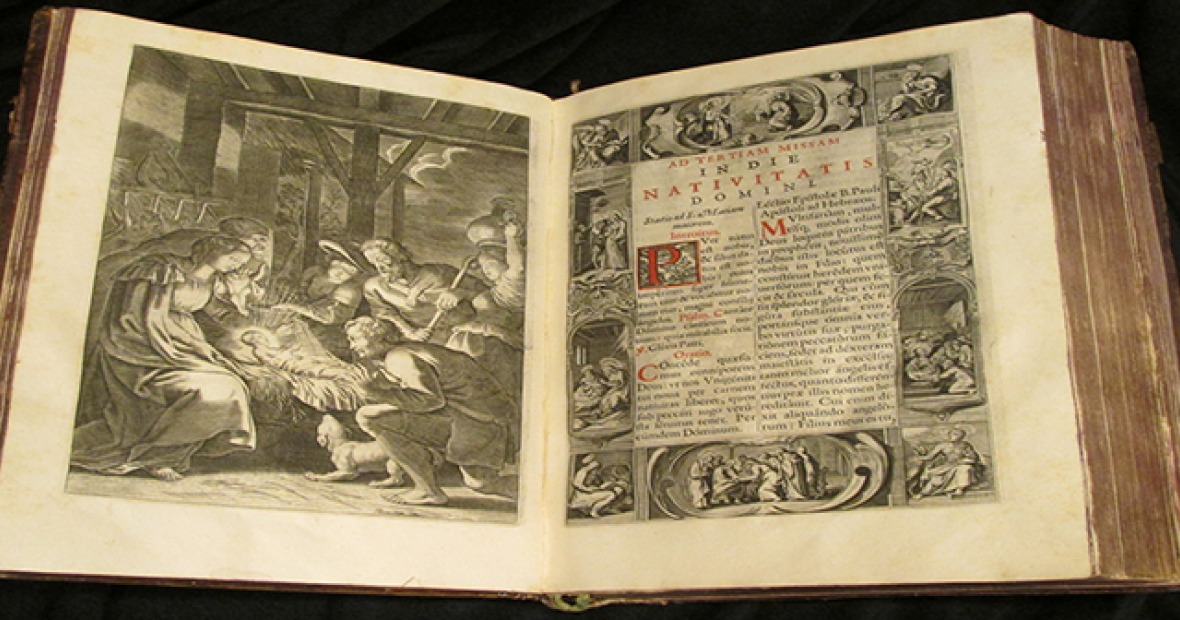Missale Romanum
Missale Romanum, ex decreto sacrosancti, Concilii tridentini restitutum, S. Pii V. Pont. max. jussu editum, Clementis VIII. Auctoritate recocgnitum: Ino quo Missae propriae de Sanctis omnes ad longum recèns positae sunt pro faciliori Celebrantium commoditate was printed in 1620 in Antwerp, Belgium. It was printed by Plantin-Moretus press.
Although the structure has changed over time, generally speaking, a missal is a liturgical book that contains the text (chants, prayers, readings), rubrics (areas of text written in red), and instructions for the Roman Catholic mass. This particular missal contains ten two-page spreads featuring full-page engravings of religious scenes facing text surrounded by very ornate and detailed engraved borders. The detailed images provide an opportunity to learn about iconography, specifically Christian iconography. The title page also features a depiction of the last supper. Unfortunately, none of the engravings are signed, making authorship unclear.
This particular missal is notable for a number of reasons. The most obvious to readers is the fact that it is printed in red and black throughout. This is interesting because it means that each sheet of paper was run through the press twice – first for the black text, and the second time to print the red text – which would have driven up the price of the work considerably. This two-tone printing and the illustrated initials found all throughout the book demonstrate the transition from the manuscript tradition to print culture. Another notable aspect of this book is that the music uses a four line staff, rather than the modern staff of five lines. Staffs of varying lines – between four and six – were used up until around 1600.
At the time of printing, Plantin-Moretus Press was made up of Balthasar Moretus, Martina Plantin, and Johannes van Meurs. The fact that one of the printers was a woman is highly unusual for the time period. The Plantin-Moretus Press was extremely well known in its time, operating until 1867. Today, the printing shop is a UNESCO World Heritage site. Visit Plantin-Moretus Press to learn more.
We encourage anyone interested in examining this missal to stop by Special Collections and look at this fascinating missal in person. Special Collections and Archives is open to the public 1:30-5:00pm Monday through Friday and mornings by appointment.
Missale Romanum was purchased through the generous donations to the Phil Kintner Fund.

